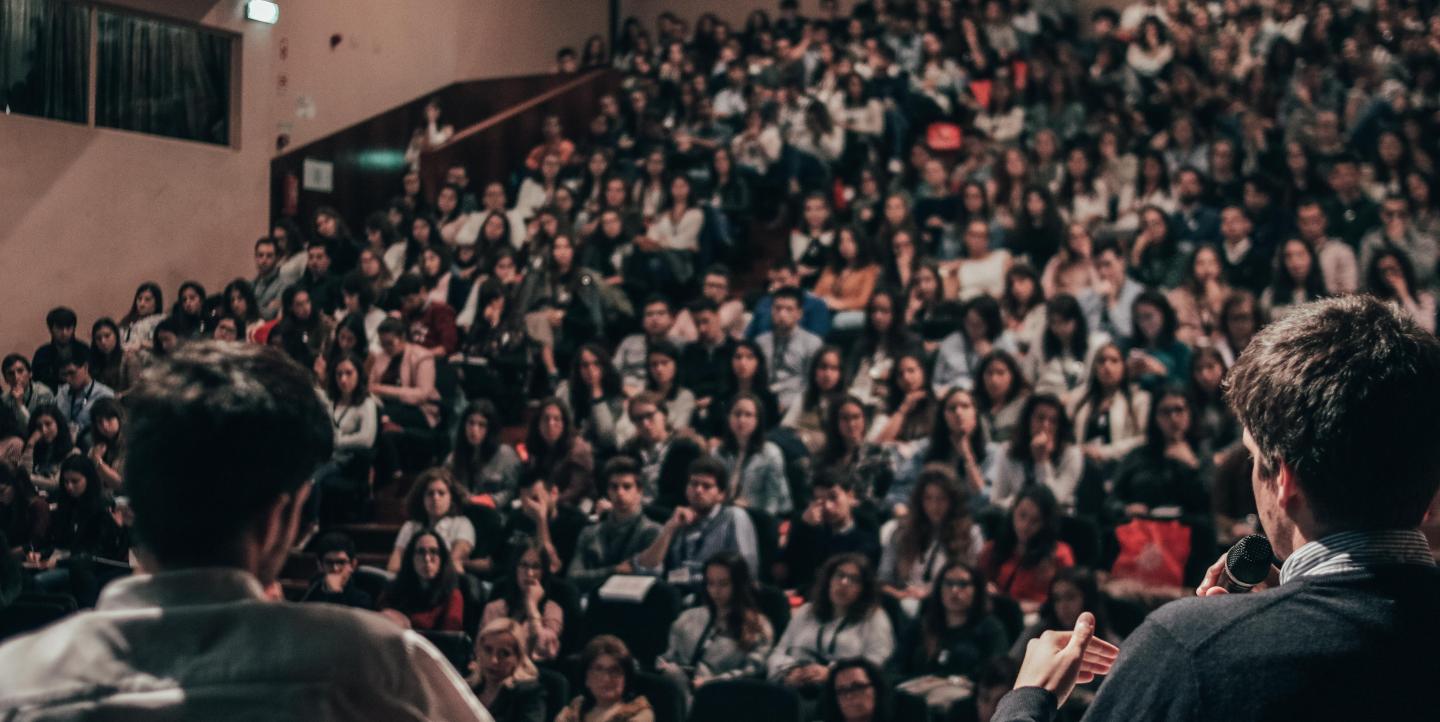As a correspondent in Venezuela for several years, French journalist Jean-Baptiste Mouttet witnessed citizens’ distrust of the media firsthand. “A lot of readers didn’t trust me because I was telling stories of torture [and] economic policy,” he said.
But when participating as a speaker in conferences about Venezuela in France, Mouttet noticed less distrust from the audience on his reporting than he had seen with his writing, which he associated with the live characteristics of the event. “It was going much better because [the audience] understood where my sources came from, and the work I had done,” he said.
Mouttet also noticed the disconnect felt by his friends when it came to mainstream media. “They did not feel legitimate [enough] to read Le Monde [the newspaper of record in France] for example. The typography, the layout, can convey an elitist feeling and it can be scary,” he said. “I started to think about how I could inform them and it was easier to invite them to an event where we could talk about the news around a drink.”
Today, more than half of French people are skeptical of the news they consume; doubts about journalists’ bias and independence are among the contributing factors.
In an effort to build public trust, make reporting more accessible, and better connect with audiences, in September 2022 Mouttet launched Mediavivant, or “Media Live,” a live journalism initiative out of Marseille.
Live articles
Every month Mediavivant invites a journalist to downtown Marseille to present an article they have reported, on topics that span local, national and international news. In one recent presentation, for instance, a journalist spotlighted an investigation they conducted into the pollution of an industrial site near Marseille.
For about 45 minutes, journalists present their reporting, for which they display supporting documents and visual aids as needed. They may also interview experts such as historians, lawyers and event witnesses. Following the presentations, Mediavivant’s team moderates open discussions between the public, the journalists and their sources. For these discussions, the journalists and the interviewees leave the stage to sit right in front of the audience. “We want people to feel legitimate to ask questions. That’s why we get off the stage, to be equal to equal,” said Mouttet.
In July 2021, Mouttet presented for the first time an article he wrote, titled Marseilles: 1943, about the deportation in 1943 of immigrants and Jews in Marseille by Nazi and French authorities. During a rerun of this article presentation in February 2023, Mouttet weaved in the importance of the place he was speaking to his audience.
“The area we are in today was destroyed after the round-up,” he said, explaining how more than 20,000 people were rounded up and expelled from their houses, including 700 who were then deported to concentration camps. The Nazis destroyed the neighborhoods, leaving little physical reminder of the deportations or memory of the events behind – an issue the live journalism presentation aimed to remedy.
“It is interesting to see that for each article, the reactions with the public are different. For example, with the article, Marseille 1943, [presented in front of several survivors of the round-ups], we feel that people are speaking out with testimonials,” said Mouttet. “Whereas for the article on pollution, we had questions from inhabitants who wanted to have more details on the consequences on their health.”
Youth engagement
In order to heal the complicated relation between the media and the public and appeal to a younger audience, Mediavivant also runs media and information literacy projects. Among these efforts are two partnerships with Marseille-area high schools, and a forthcoming media literacy project with a nearby prison.
“The idea is to give them the tools to build their own investigations,” said Mouttet. “When students work on their article, it’s their [job] to demonstrate how they got their information. It leads them to source and cross-check their information.” One of the high school groups presented their investigative reporting to the public in late March.
Media and information literacy
The live articles themselves can be viewed as a media and information literacy tool, Mouttet believes. For example, during his presentation on the Marseille round-ups, Mouttet showed archived pictures of the deportations, while noting that they were taken by Nazi soldiers and thus reflecting the soldiers’ point of view of these operations. By doing so, he emphasized the importance of questioning the origin of supporting documentation.
Mediavivant wants to appeal to people that don’t typically follow the news. Everything, from the choice of the venue to the communication strategy, is oriented toward this goal. For instance, the team uses flyers, posters and Facebook events to promote their presentations. On the Mediarama podcast, Alix de Crécy, head of digital strategy and development, explained that she had to break “all the prerequisites [she] learned working for bigger media.”
"I've always worked for newsrooms that have very strong DNA and are well-known,” said Crécy. “We are learning how to introduce this DNA, to make us understood.”
Going forward, Mediavivant hopes to bring the initiative to other cities in France. "Why not do premieres elsewhere?,” said Mouttet.
Photo by Miguel Henriques on Unsplash.


